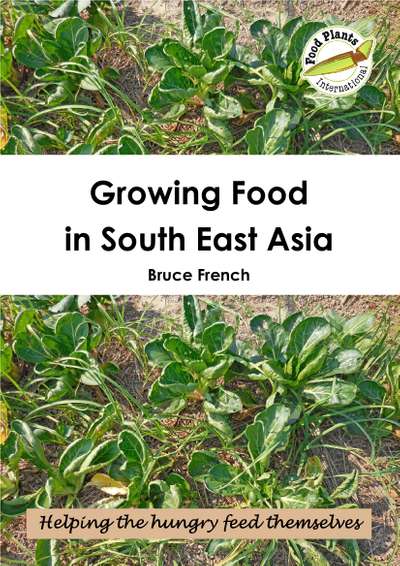Food Plants International - Publications Growing Food in Southeast Asia

12 propositions for addressing malnutrition and food production
1. Local plants suit local conditions. Local food plants fail less often as they suit and are adapted to the environment.
2. Maintain a diversity of food plants. For sustainable production and good nutrition use a diversity of plants as this gives more stable production and more balanced diets.
3. Share knowledge and learn from locals. Local people (especially women) are often familiar with plants but don’t know their food values.
4. Collect planting materials locally. Locally selected plants have durable resistance, so get less disease and pest damage.
5. Use a mixture of plants throughout the garden. Mixed cropping reduces pest and disease problems, protects the soil and often reduces water use.
6. Grow dark green leaves. Local dark green edible leaves are often highly nutritious and can provide essential iron and Vitamin A (more available when cooked in oil).
7. Grow some perennial food plants. Tubers and trees can be important reserve foods. Food can become short in the drier seasons and some trees produce fruit at these times.
8. Put the right plant in the right place. People need to carefully match food plants to the right ecological zone. Include plants suitable for drier seasons when the rains don’t come. Arid plants suit arid places. Swamp plants suit swamps. 11
9. Many traditional edible plants also have medicinal value. These uses are now being scientifically verified and they are called ‘functional’ foods because they have other functions besides providing nutrients. The soursop family has proven anticancer properties. Nettles are good for prostrate conditions.
10. Using local plants is low cost and offers easier availability. Informing people on how to most strategically utilise local food plant resources empowers them to determine their own destiny and maintain their dignity. Adopting GMO seeds creates dependency on companies for seed, fertiliser and chemical sprays and does not help the poor.
11. Attractive, well-illustrated publications can change attitudes. Local plant names and nutritional data need to be provided. Better ways to flavour or cook local plants can enhance their adoption.
12. Use mulch and stop burning. Burning causes nutrients such as nitrogen and sulphur to be lost into the atmosphere. Old plant material could be composted or often simply used as mulch to reduce loss of water by evaporation and help keep the soil alive by encouraging important soil micro-organisms.